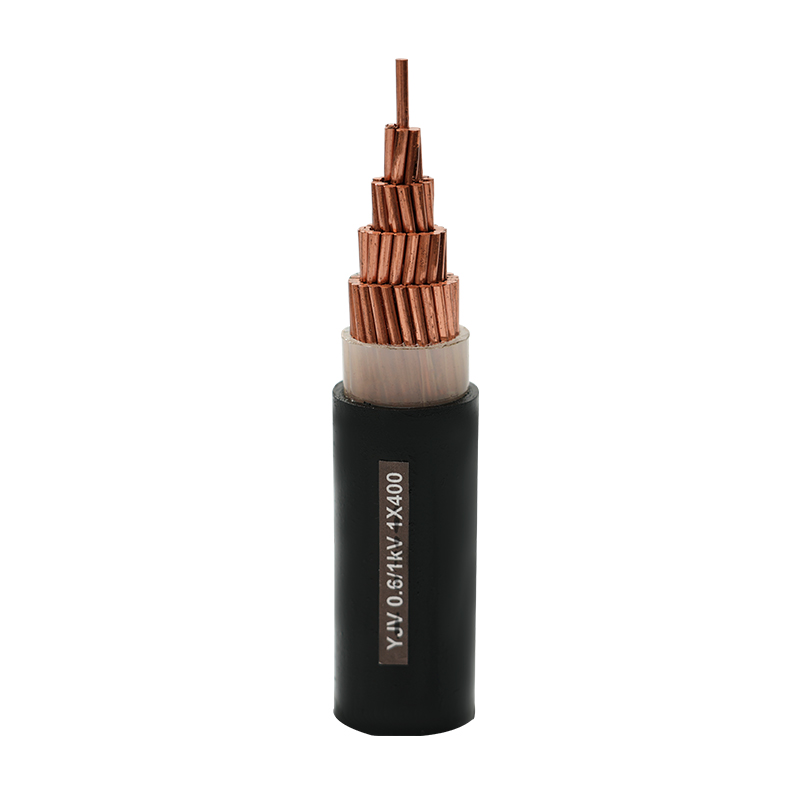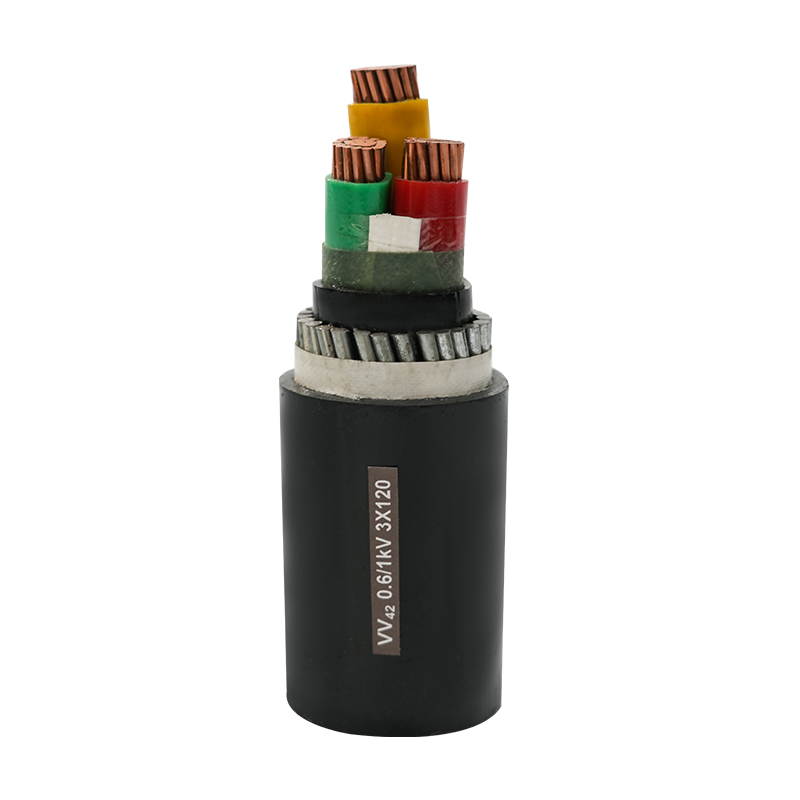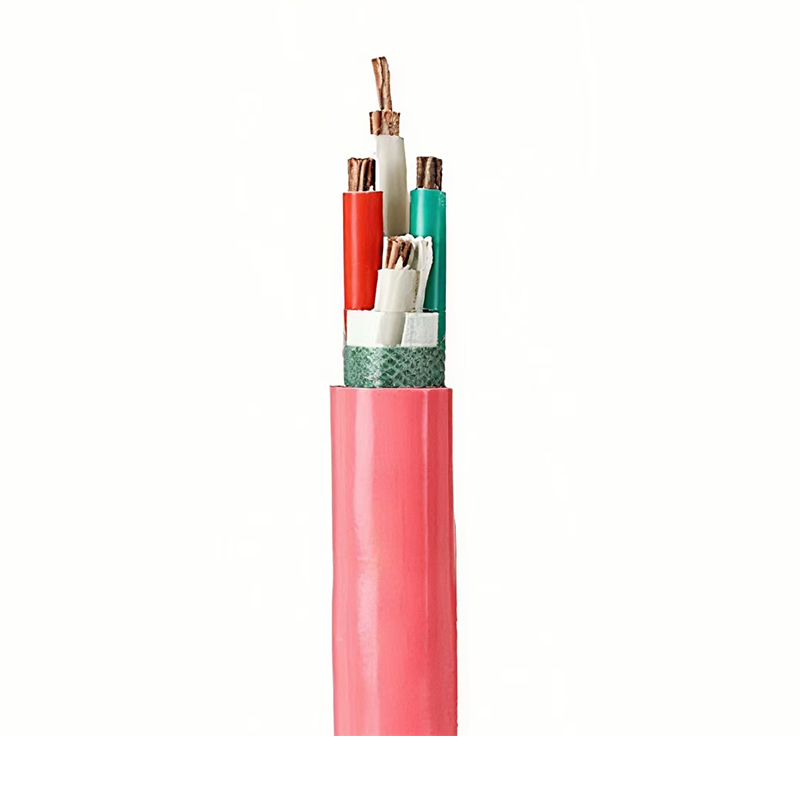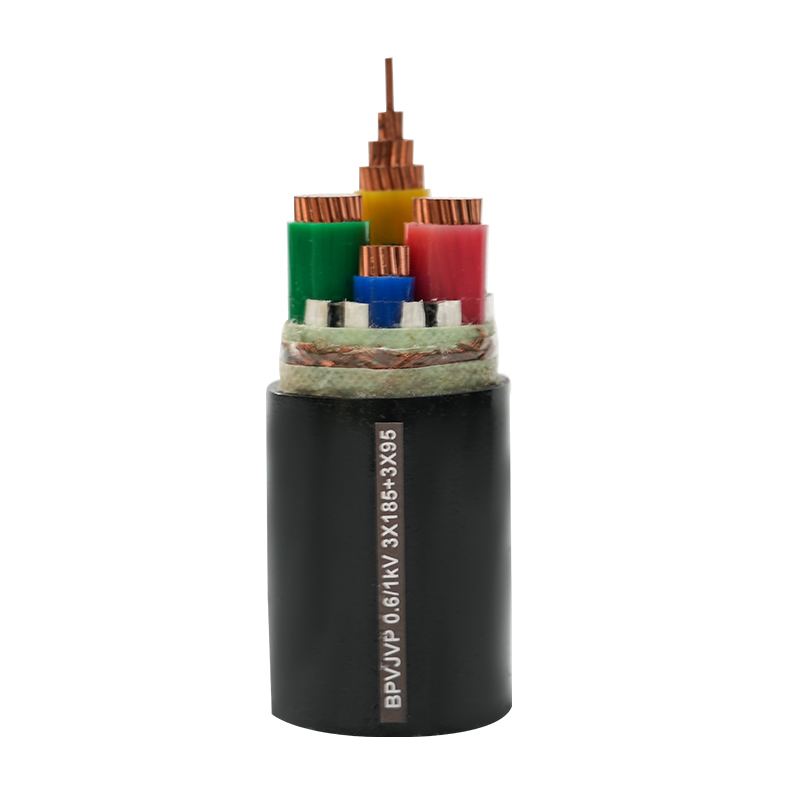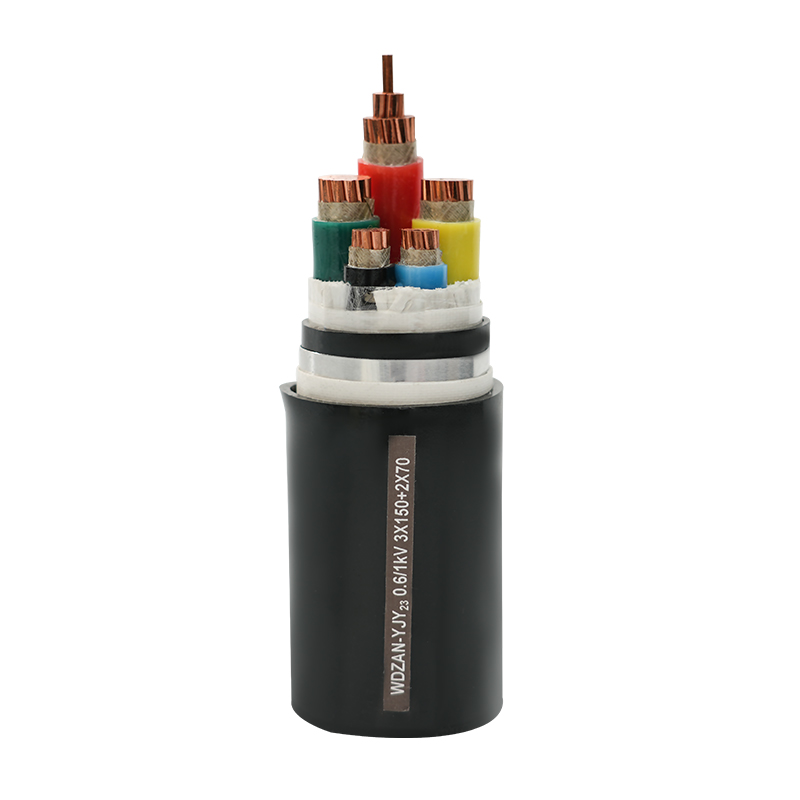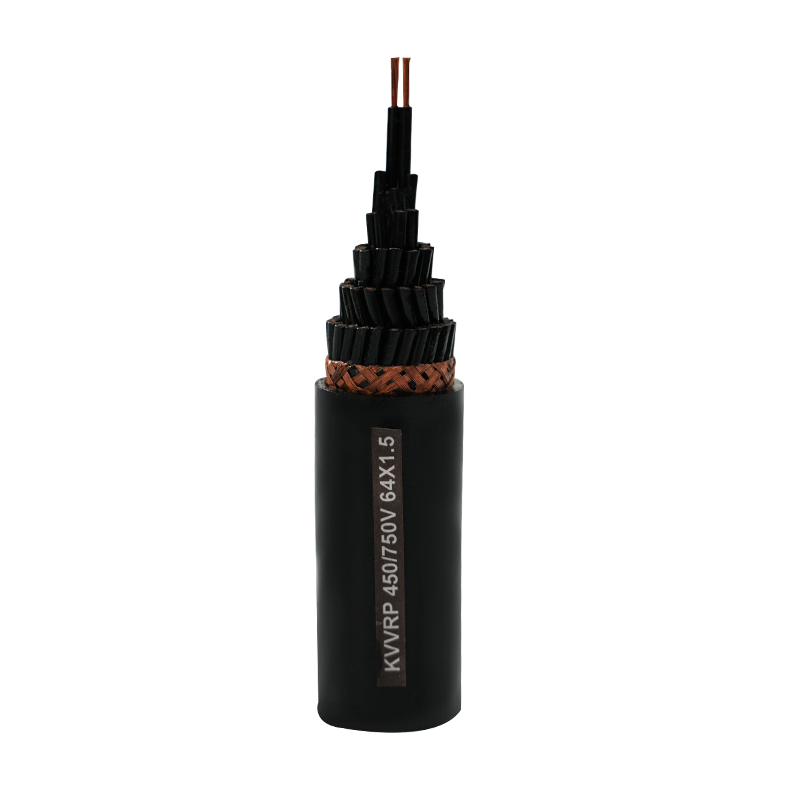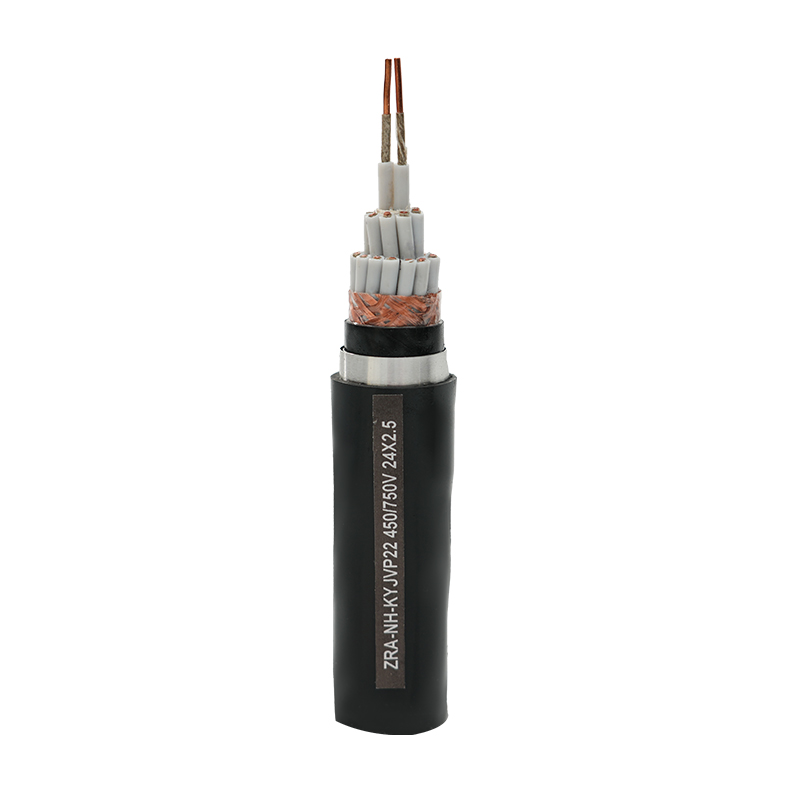The Key Role of XLPE Insulated Marine Frequency Conversion Cable
As a key device in the ship power system, the inverter works by converting the DC power of the power supply into AC power with variable frequency and voltage. This converted power needs to be transmitted to the propulsion motor through a reliable medium to achieve precise control of the motor speed and torque, thereby meeting the power requirements of the ship under different navigation conditions. Cross-linked polyethylene insulated marine frequency conversion cable undertakes the important task of power transmission. Its ability to stably transmit power signals directly determines whether the propulsion motor can operate smoothly according to instructions, and plays a decisive role in the safety and controllability of ship navigation. During the ship's sailing stage, the strong power demand requires the cable to be able to transmit a large amount of power instantly and maintain the stability of the current to avoid the propulsion motor starting poorly due to current fluctuations, affecting the ship's sailing speed and stability. During the acceleration process, the cable must cooperate with the inverter to accurately adjust the frequency and voltage of the output power to ensure that the speed of the propulsion motor can rise steadily, providing continuous and stable acceleration power for the ship.
Excellent performance of conductive core wires
The conductive core wires of cables are usually made of high-purity copper materials, which is based on the outstanding characteristic of copper with low resistivity. In the ship power system, a large amount of electrical energy needs to be transmitted from the power supply end to key equipment such as propulsion motors. The low resistivity enables the current to minimize energy loss when passing through the copper core wire and achieve efficient power transmission. In the ship system with long-distance power transmission, high-purity copper core wires can effectively reduce the voltage drop, ensure that equipment such as propulsion motors obtain stable and sufficient voltage, and maintain normal operation. Even if the ship encounters environmental changes such as high temperature and low temperature during operation, the conductivity of copper remains relatively stable, which ensures that the continuity and stability of power supply are not affected under different environmental conditions, providing a solid guarantee for the stable operation of the ship power system.
Advantages of cross-linked polyethylene insulation layer
As an ideal material for the insulation layer of marine frequency conversion cables, cross-linked polyethylene has many excellent properties after converting ordinary polyethylene molecules from linear structures to three-dimensional mesh structures by chemical or physical methods. In high-temperature environment areas such as ship engine rooms, cross-linked polyethylene insulation layers can work stably. Its heat resistance is greatly improved. Compared with ordinary polyethylene, its long-term working temperature is significantly increased and its thermal life is also extended. This means that in a high temperature environment, the insulation layer will not cause the insulation performance to decrease due to excessive temperature, effectively preventing the occurrence of faults such as short circuits and ensuring the safety of power transmission. At the same time, cross-linked polyethylene maintains and enhances the original good insulation properties of polyethylene, its insulation resistance is further increased, the dielectric loss tangent is very small and is not greatly affected by temperature, which can effectively prevent current leakage, maintain the stability of power transmission, and ensure the stable operation of the power system. In addition, the mechanical properties of cross-linked polyethylene have also been significantly improved, and its hardness, stiffness, wear resistance and impact resistance have been enhanced, so that it can better resist external force extrusion, friction and other damage in the complex wiring environment of ships, ensuring the integrity of the cable structure and thus ensuring the stable operation of the power system.
Protective role of the sheath layer
Ships are in the marine environment for a long time, facing harsh conditions such as high humidity, salt spray erosion and possible oil contamination. The sheath layer of the cable shoulders an important protection mission. Special materials with good weather resistance and oil resistance are usually selected, such as acrylonitrile-butadiene rubber (NBR). NBR sheath can effectively resist the corrosion of salt spray, prevent metal parts from rusting, avoid the degradation of cable performance and failure caused by rust, and thus extend the service life of the cable. Its good oil resistance can avoid swelling, aging and other phenomena caused by contact with various oils such as fuel oil and lubricating oil, ensure the stable operation of the cable in the surrounding environment such as the ship power system and fuel delivery system, maintain the integrity and performance stability of the overall cable structure, and provide reliable external protection for the stable operation of the ship power system.
Conductor twisting process improves the practicality of the cable
The conductive core wire is made by twisting process, and multiple thin copper wires are twisted together in a specific way. This process brings many advantages to the cable. In the complex wiring space of the ship, such as the narrow electrical compartment of some small ships, the soft cable can be bent and wired more flexibly, greatly reducing the difficulty and cost of installation. At the same time, the twisting process improves the overall strength of the cable, and effectively prevents the breakage of a single copper wire from affecting the conductive performance by dispersing stress. During the twisting process, the diameter of the copper wire, the twisting pitch and other parameters are strictly controlled to ensure that the conductor resistance meets the standard requirements, achieve the best conductive effect, and provide a reliable conductor foundation for the stable power transmission of the ship power system.
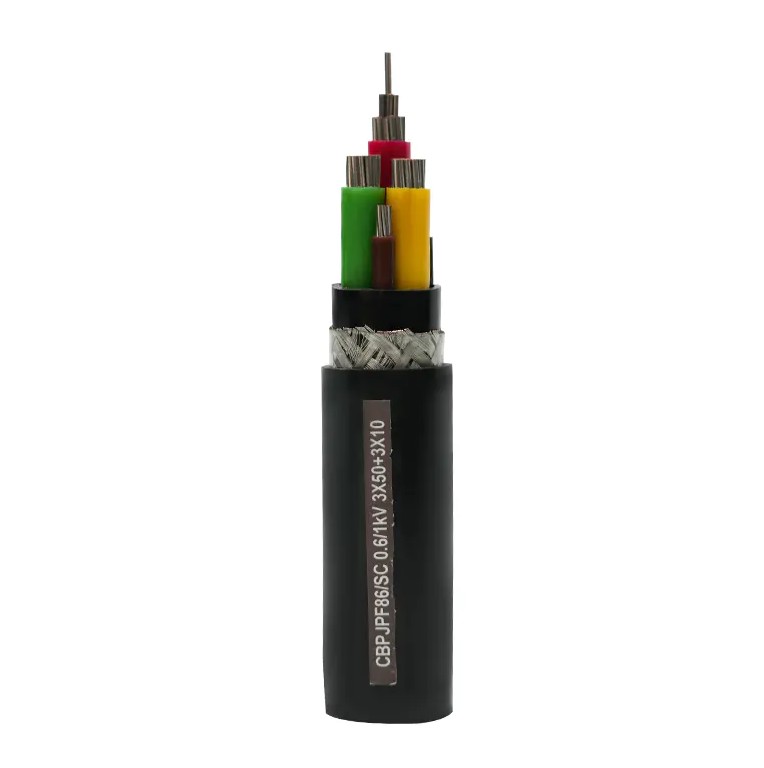
Cross-linked polyethylene insulation extrusion process ensures insulation quality
The cross-linked polyethylene insulation layer is produced by extrusion equipment in an extrusion package. Under high temperature and high pressure conditions, the molten cross-linked polyethylene insulation material is evenly extruded and wrapped on the surface of the conductor. This process requires extremely precise process parameters such as temperature, pressure, and extrusion speed. The appropriate temperature can ensure the fluidity of the insulation material, so that it can fit the conductor tightly to form a uniform insulation layer; stable pressure ensures the consistency of the thickness of the insulation layer to avoid thickness deviations that lead to uneven insulation performance; precise control of the extrusion speed can ensure the balance between production efficiency and product quality. The cross-linked polyethylene insulation layer produced by this precisely controlled process is tightly combined with the conductor and has good interface performance, which effectively improves the insulation performance and overall reliability of the cable, and provides reliable insulation guarantee for the stable operation of the ship power system.
Shielding structure manufacturing process to deal with electromagnetic interference
The electromagnetic environment in the ship power system is complex, and cross-linked polyethylene insulated marine frequency conversion cables are usually equipped with shielding structures. Common shielding methods include copper tape wrapping, tinned copper wire braiding, etc. Copper tape wrapped outside the insulation layer can effectively shield the electromagnetic field generated inside the cable from radiating outward, reducing interference with other electronic equipment on the ship. The shielding layer woven from tinned copper wire can not only shield the interference of external electromagnetic fields on the internal signals of the cable, but also quickly introduce short-circuit current into the ground when the cable fails, playing a safety protection role. During the production process, the thickness of the copper tape, the tightness of the wrapping, the diameter of the tinned copper wire, the braiding density, etc. are carefully designed and strictly controlled to achieve the best shielding effect and electrical performance, ensuring the stable operation of the ship's power system in a complex electromagnetic environment.
Sheath layer molding process enhances protection performance
The molding of the sheath layer generally adopts molding or extrusion process. Taking the extrusion process as an example, the sheath material such as NBR is melted at a specific temperature, extruded through a mold and wrapped around the shielding layer or insulation layer of the cable (when there is no shielding structure). During the extrusion process, the temperature, pressure and extrusion speed must be strictly controlled to ensure that the thickness of the sheath layer is uniform, the surface is smooth, and there are no defects such as bubbles and impurities. At the same time, it is necessary to ensure that the sheath layer is closely combined with the inner structure and has good adhesion. The sheath layer formed in this way can effectively resist external mechanical damage, chemical corrosion and the influence of adverse climatic conditions during the operation of the ship, protect the internal structure of the cable from damage, and provide a solid external protective barrier for the long-term stable operation of the ship's power system.
Support of cross-linked polyethylene insulated marine frequency conversion cable in various links of the ship's power system
Stable drive of propulsion motor
In the ship's power system, the propulsion motor is the core equipment for the ship's navigation, and the cross-linked polyethylene insulated marine frequency conversion cable is the key connection component for driving the propulsion motor. When the ship sets sail, the cable can quickly respond to the high-power, high-frequency electric energy output by the inverter, and stably transmit it to the propulsion motor, so that the motor starts quickly and provides strong initial power. In the acceleration stage, the cable cooperates with the inverter to accurately adjust the electric energy to ensure that the speed of the propulsion motor rises steadily, providing continuous power for the acceleration of the ship. When cruising, the cable maintains stable power transmission to ensure that the propulsion motor runs at a constant speed to achieve stable navigation of the ship. When decelerating, the cable can accurately transmit the low-frequency, low-power electric energy adjusted by the inverter, so that the propulsion motor can slow down smoothly. When berthing, the cable assists the inverter to finely control the propulsion motor, realize the low-speed and precise operation of the motor, and ensure the safe docking of the ship. Throughout the process, the stable power transmission of the cable ensures the stable operation of the propulsion motor, thereby ensuring the safety and controllability of the ship's navigation.
Power guarantee of auxiliary system
The auxiliary system of the ship, such as generators, pumps and other equipment, also relies on cross-linked polyethylene insulated marine frequency conversion cables to provide stable power support. As one of the main sources of ship power, the stability of the operation of the generator directly affects the power supply of the ship. The cable efficiently transmits the electric energy generated by the generator to various parts of the ship's power system to ensure the stable distribution of electricity. For equipment such as pumps, the cable provides continuous power to ensure the normal operation of various auxiliary functions of the ship, such as fuel delivery, seawater desalination, bilge drainage, etc. The stable operation of these auxiliary equipment is crucial to maintaining the overall stability of the ship's power system, and the cross-linked polyethylene insulated marine frequency conversion cable plays an indispensable role in ensuring power transmission.

 English
English 中文简体
中文简体 русский
русский عربى
عربى